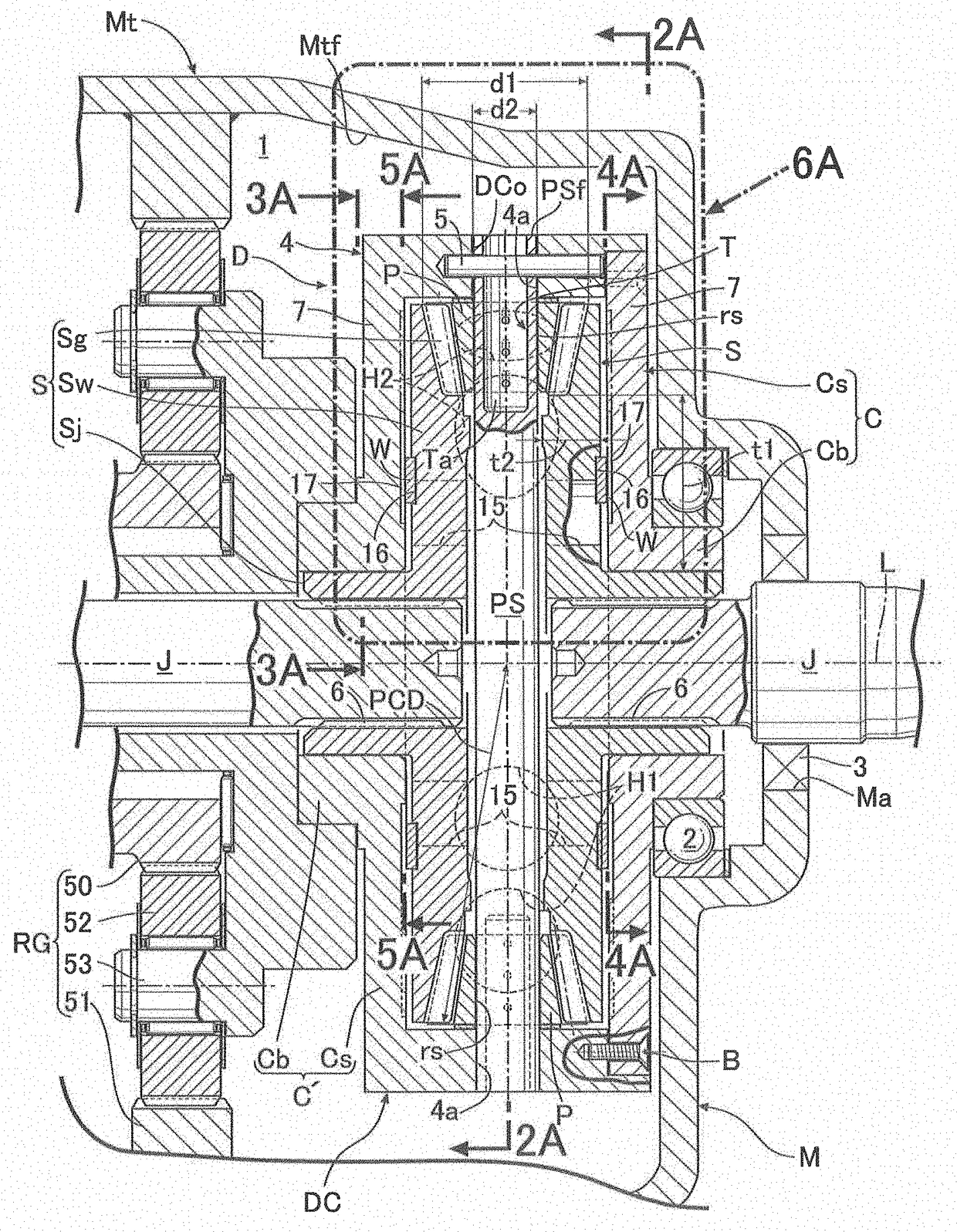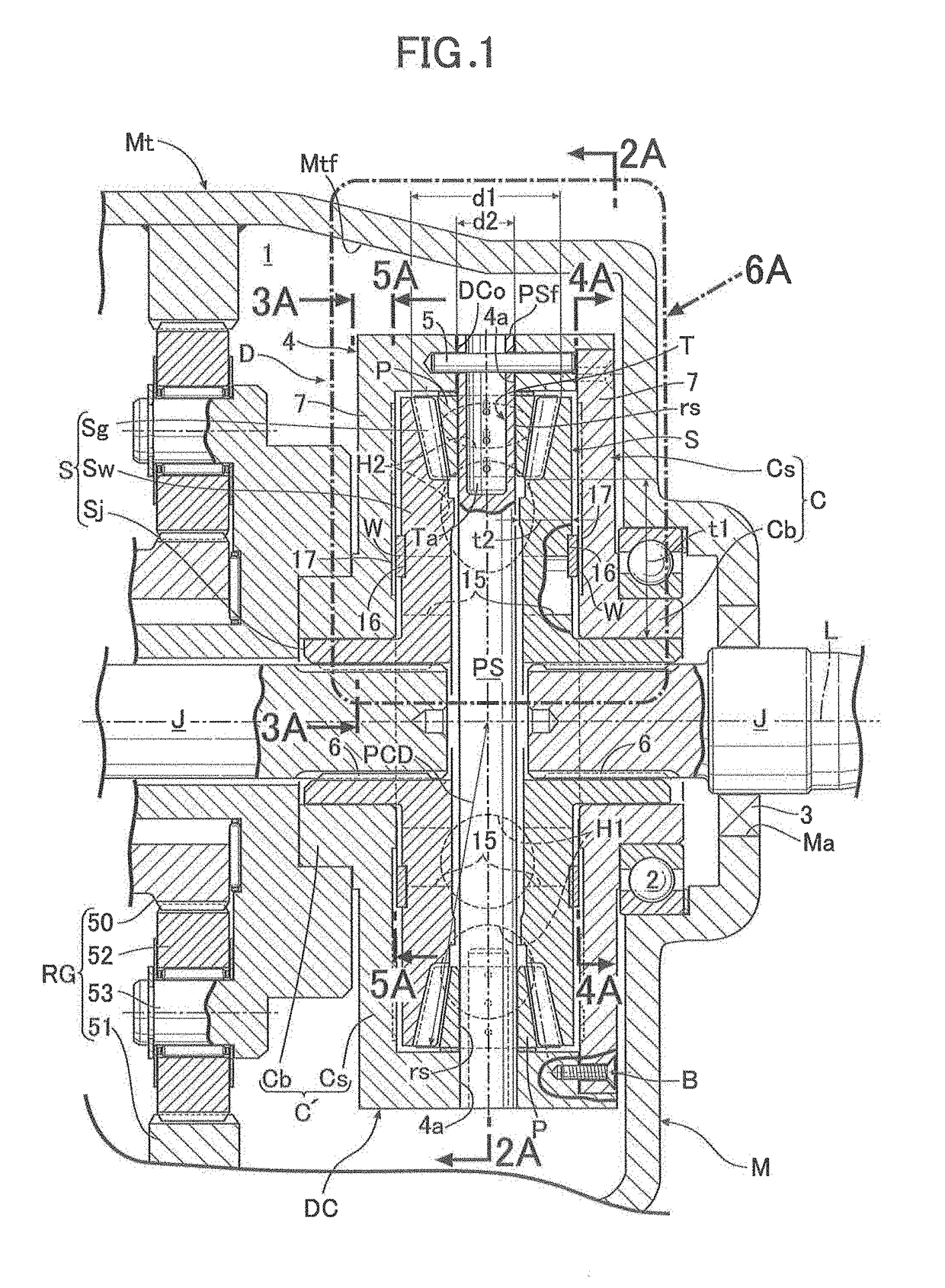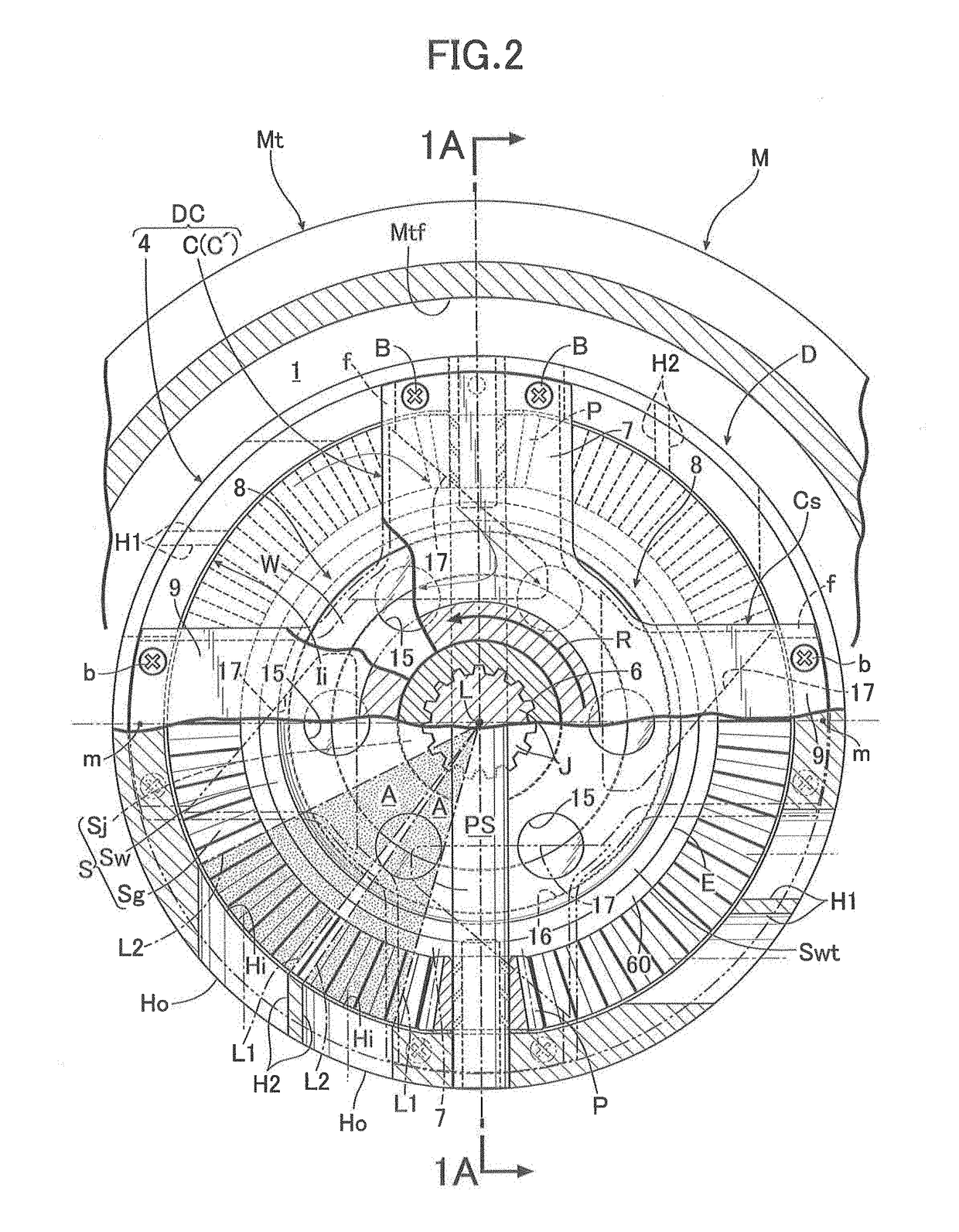Differential device
a technology of differential device and lubricant oil, which is applied in the direction of gearing details, mechanical equipment, gearing, etc., can solve the problems of insufficient supply of lubricant oil to the oil reserving portion, insufficient lubricating of the fitting portion, and insufficient lubricating of the rotation sliding portion, so as to achieve efficient supply of lubricant oil
- Summary
- Abstract
- Description
- Claims
- Application Information
AI Technical Summary
Benefits of technology
Problems solved by technology
Method used
Image
Examples
Embodiment Construction
[0037]An embodiment of the present invention will be described below based on the attached drawings.
[0038]First of all, in FIG. 1, a differential device D is connected to an engine (not illustrated) as a power source mounted on an automobile via a speed reduction gear mechanism RG. The differential device D drives left and right axles while allowing differential rotation between the left and right axles by distributively transmitting to a pair of left and right output shafts J rotational force which is transmitted from the engine to a differential case DC via the speed reduction gear mechanism RG, the pair of left and right output shafts J being continuous respectively to the pair of left and right axles. The differential device D is housed together with the speed reduction gear mechanism RG in, for example, a transmission case M placed beside the engine in a front portion of a vehicle body, in a way that the differential device D is adjacent to the speed reduction gear mechanism RG...
PUM
 Login to View More
Login to View More Abstract
Description
Claims
Application Information
 Login to View More
Login to View More - R&D
- Intellectual Property
- Life Sciences
- Materials
- Tech Scout
- Unparalleled Data Quality
- Higher Quality Content
- 60% Fewer Hallucinations
Browse by: Latest US Patents, China's latest patents, Technical Efficacy Thesaurus, Application Domain, Technology Topic, Popular Technical Reports.
© 2025 PatSnap. All rights reserved.Legal|Privacy policy|Modern Slavery Act Transparency Statement|Sitemap|About US| Contact US: help@patsnap.com



